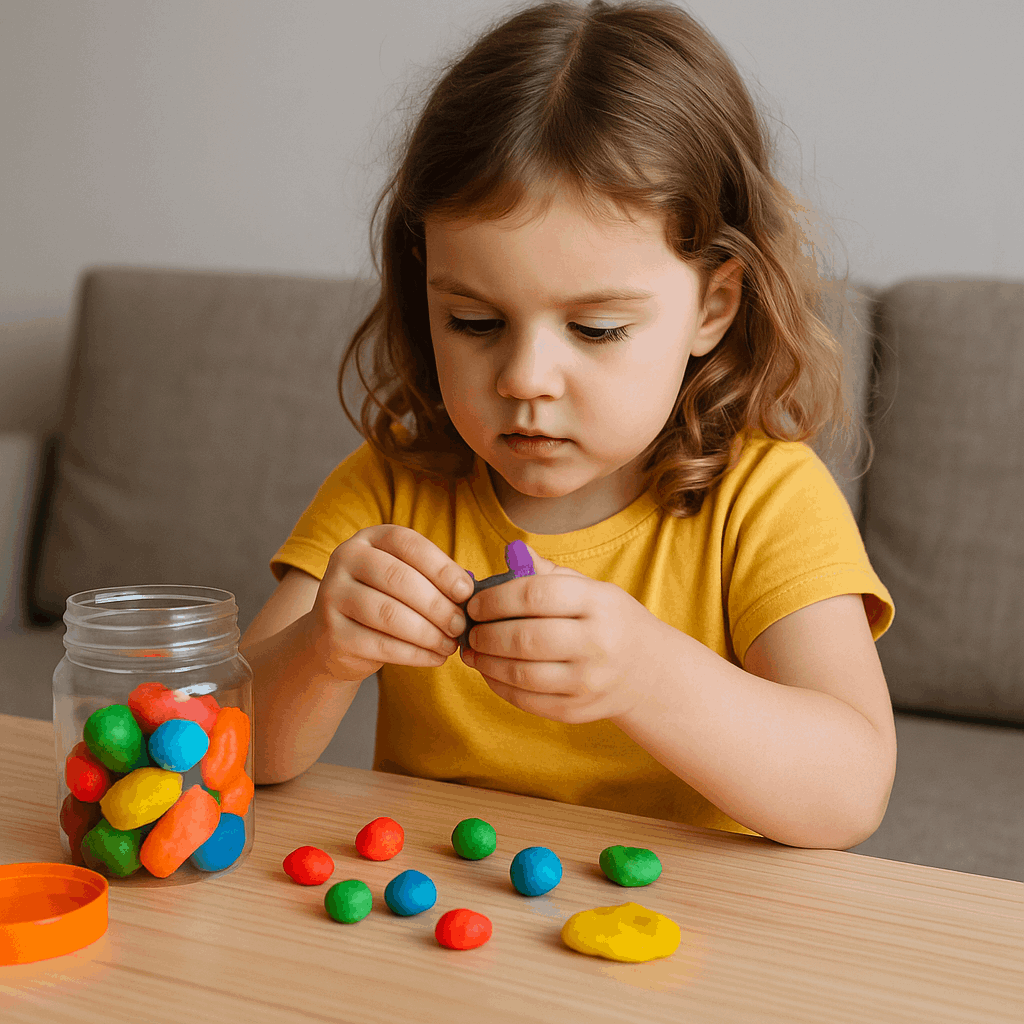
OT Activities at Home
Occupational therapy (OT) isn’t limited to the clinic or school setting. In fact, some of the best progress happens right at home through play, routine, and everyday tasks. Whether your child is working on fine motor skills, sensory regulation, or daily independence, there are plenty of ways to support their growth in the comfort of your own home.
Here are some fun and effective occupational therapy activities you can do at home with little to no special equipment.
Fine Motor Skill Builders
Fine motor skills are crucial for writing, self-feeding, dressing, and more. Strengthening those small muscles in the hands and fingers can be both fun and functional.
Playdough Time: Squeeze, roll, pinch, and cut playdough to build hand strength.
Sticker Play: Let your child peel and place stickers on paper, great for pincer grip.
Beading Activities: Stringing beads or pasta onto yarn helps with coordination and patience.
Tweezers & Tongs: Use kitchen tools to sort small objects like pom-poms or cereal.
Gross Motor Activities
Large muscle movements help with balance, coordination, and core strength—skills children need for running, jumping, climbing, and sitting upright at school.
Obstacle Courses: Set up a simple course using cushions, tape lines, or chairs.
Animal Walks: Pretend to be a bear, crab, or frog to build strength and stability.
Ball Play: Kicking, throwing, or catching balls helps with hand-eye coordination and timing.
Wall Push-Ups: A great way to build upper body strength in a fun, controlled way.
Sensory Regulation Tools
Some children seek out or avoid certain sensory experiences. Sensory activities can help them feel more balanced and focused throughout the day.
Sensory Bins: Fill a tub with rice, beans, sand, or water beads and hide small toys inside.
Swing Time: A backyard or indoor swing can be calming and regulating.
Brushing or Deep Pressure: Talk to your OT about safe deep-pressure strategies like weighted blankets or body squeezes.
Water Play: Let your child pour, scoop, and splash during bath time or with a water table.
Self-Care and Life Skills
Everyday routines offer built-in opportunities for OT practice. Encourage independence in tasks like:
Getting Dressed: Let them choose and put on their clothes, using adaptive tools if needed.
Cooking Together: Stirring, pouring, and spreading are great for hand control.
Chore Time: Folding laundry, wiping counters, and sweeping all build coordination.
Toothbrushing Practice: Create a fun routine with a visual schedule or sing a brushing song.
Keep It Fun and Consistent
The key to success with OT at home is consistency—and fun. Short, regular activities that feel like play are far more effective than long, stressful sessions. Follow your child’s lead, offer encouragement, and celebrate the small wins.